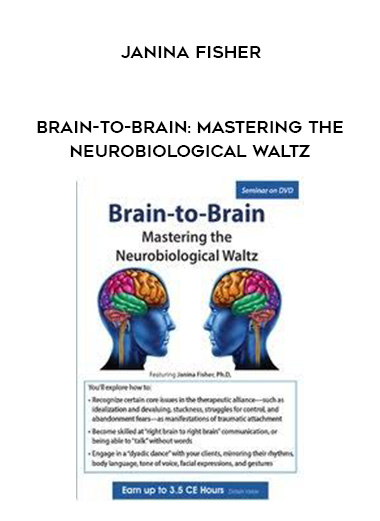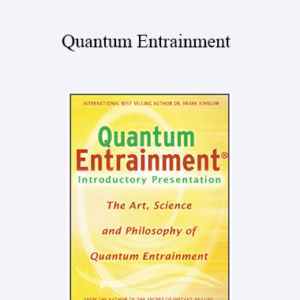[Download Now] Brain-to-Brain: Mastering the Neurobiological Waltz – Janina Fisher
Clients raised by neglectful and frightening caregivers may as adults find themselves living with an unconscious somatic legacy of early traumatic attachment, yearning for closeness but unable to tolerate or sustain intimacy. Even their nervous systems rebel against physical proximity to others, or can’t tolerate being without proximity. As a result, their relationships—even with therapists—are tumultuous. The necessary strategy for working with these clients is coregulation, an approach that doesn’t depend on words but rather on a brain-to-brain neurobiological waltz that relies on the therapist’s attunement to implicit emotional and somatic communication. You’ll explore how to:
- Recognize certain core issues in the therapeutic alliance—such as idealization and devaluing, stuckness, struggles for control, and abandonment fears—as manifestations of traumatic attachment
- Become skilled at “right brain to right brain” communication, or being able to “talk” without words
- Engage in a “dyadic dance” with your clients, mirroring their rhythms, body language, tone of voice, facial expressions, and gestures
- Explore how to recognize certain core issues in the therapeutic alliance—such as idealization and devaluing, stuckness, struggles for control, and abandonment fears—as manifestations of traumatic attachment
- Explore how to become skilled at “right brain to right brain” communication, or being able to “talk” without words
- Explore how to engage in a “dyadic dance” with your clients, mirroring their rhythms, body language, tone of voice, facial expressions, and gestures
- Therapeutic relationship as dance between attachment systems
- Impact of early childhood experiences on attachment and affect regulation
- Arousal and self-regulation
- Secure v. insecure context
- Brain structures and systems related to self-regulation of affect
- Functions of sympathetic and parasympathetic nervous system
- Consequences of hypoarousal and hyperarousal
- Unconscious nature of early attachment experiences
- Body memory/somatic learning
- Approach v. avoidance
- Therapeutic relationship and managing sense of threat
- Styles of attachment
- Unconscious nature of body memory
- Nonverbal cues and therapeutic communication
- Successful regulation of arousal
- Optimal window of arousal
- Sources of therapist dysregulation
- Identifying somatic transference and countertransference
- Sensorimotor Psychotherapy
- Impact of internal dialog, labeling
- Mind/body integration
- Integrating mindfulness practices
- Co-regulation in interpersonal psychotherapy
- Effective methods of communication
- Connecting and integrating sensory perceptions
- Experimentation as technique
- Working brain to brain
- Role of mirror neurons
- Social engagement system
- Flowing with resistance
- Summary
GET BRAIN-TO-BRAIN: MASTERING THE NEUROBIOLOGICAL WALTZ OF AUTHOR JANINA FISHER
Tag: Brain-to-Brain: Mastering the Neurobiological Waltz – Janina Fisher Review. Brain-to-Brain: Mastering the Neurobiological Waltz – Janina Fisher download. Brain-to-Brain: Mastering the Neurobiological Waltz – Janina Fisher discount.
Delivery Method
– After your purchase, you’ll see a View your orders link which goes to the Downloads page. Here, you can download all the files associated with your order.
– Downloads are available once your payment is confirmed, we’ll also send you a download notification email separate from any transaction notification emails you receive from coursesblock.com
– Since it is a digital copy, our suggestion is to download and save it to your hard drive. In case the link is broken for any reason, please contact us and we will resend the new download link.
– If you cannot find the download link, please don’t worry about that. We will update and notify you as soon as possible at 8:00 AM – 8:00 PM (UTC 8).
Thank You For Shopping With Us!







